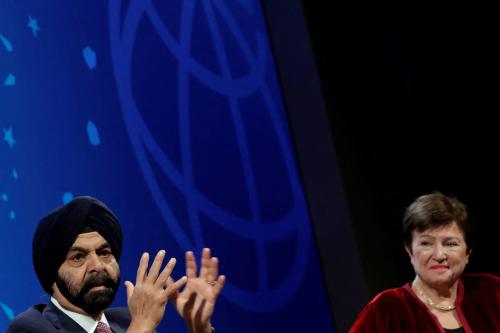Introduction
The Executive Board of the International Monetary Fund approved on March 28th a recommended set of reforms for IMF quotas and voting shares and asked the Governors of the 185 member nations to vote by the end of April 2008 to approve the resolution embodying the proposed reforms.
The Managing Director of the IMF, Dominique Strauss-Kahn, described the proposed reforms as “a very important step.” The package does contain modest improvements in existing governance procedures for the IMF. But the improvements fall very far short in addressing the challenges facing the IMF in its hoped-for evolution toward a global institution with more balanced and inclusive representation and voting power.
The most serious failing of the proposed reforms is the omission of any changes in the composition and size of the IMF’s Executive Board. Throughout the discussions leading up to the March 28th agreement, all questions about the size of the Executive Board and the disproportionate dominance of European “chairs” were taken off the table completely. Yet the composition and procedures of the Executive Board are the aspects of IMF governance most in need of reform.
The proposed revised formula for calculating the presumptive quota and voting shares of members is an especially weak component of the proposed package. Taken on its own, the formula generates changes in shares that move away from rather than toward a closer alignment of voting power with economic realities. The proposed package as a whole achieves its very modest improvements only because the formula is overridden with one-time, ad hoc adjustments that mask the unpalatable consequences of the formula and because the basic votes allocated to each member are tripled. The new formula, despite assurances to the contrary, is not a viable basis for making future adjustments in quotas and votes that will adequately reflect changes in relative positions in the world economy.
This note identifies the positive and the disappointing aspects of the recommended reform package and assesses the package in the light of further, more ambitious reforms that will be required in the future.


